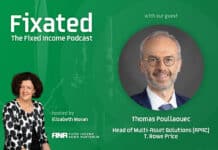
Recent data releases appear to give the green light for the US Federal Reserve to begin easing monetary policy in September. However, according to Franklin Templeton Fixed Income CIO Sonal Desai, the key issue remains the nature of the easing cycle ahead—namely its duration, its speed, and the policy rate endpoint.

Desai says: “The latest US economic data gives the Federal Reserve (Fed) the green light to cut interest rates, in my view. The much-awaited easing cycle is therefore very likely to start at the Fed’s next meeting in September, and the prospect has generated instant excitement across financial markets. But as I have stressed for a long time now, the really important issue is the nature of the easing cycle ahead, namely its duration, its speed, and the endpoint for the policy rate. I remain convinced that we will see a gradual easing of policy, with rate cuts totaling somewhere around 125- 150 basis points (bps), leaving the fed funds rate at or above 4%—significantly higher than what many analysts are now expecting.
“The latest employment report was likely the clincher for the Fed. US non-farm payrolls came in at a weak 114,000 for the month of July, signaling a slowdown in hiring. This, together with an uptick in the participation rate, pushed the unemployment rate to 4.3% from 4.1% previously. This was a genuinely weak report, albeit the extent to which it was impacted by Hurricane Beryl, which struck the Gulf Coast during the month, is unclear. Labor flows from unemployed to employed have slowed, and wage growth decelerated to a 0.2% month-on-month—all coming on the back of rising jobless claims.
“Inflation is not yet back to target, but it remains within striking range, and the cooling of wage growth should reduce the risk of a flareup. Overall, the balance of risks has shifted sufficiently that it looks appropriate for the Fed to start easing policy, to help prevent a faster deterioration in the labor market.
“As could be expected at such a meaningful turning point, a number of investors and analysts are now rushing to anticipate a very sharp policy correction. Some are calling for a 50-bps cut in September; others expect the fed funds rate to swiftly fall to close to 3% next year. I think the current economic outlook doesn’t justify these predictions.
Also read: Markets’ Consolidation Belies Fiscal Concerns
“Let’s try to put things in perspective. With the exception of the exuberant days in the runup to the global financial crisis, the US unemployment rate had averaged close to 5% in the prior decade. The non-accelerating inflation rate of unemployment (NAIRU) may have dropped in the more recent period, but an unemployment rate below 4.5% still signals a rather healthy labor market, and the weakening has so far been very gradual, consistent with the kind of slowdown in hiring that one would expect to see in an economy already at full employment.
“The production side of the economy has shown signs of slowing, in particular with weak readings in the Institute for Supply Management (ISM) manufacturing index and the Purchasing Manager Index. But consumer spending is holding up well. June retail sales were stronger than anticipated, personal spending grew at a faster pace than the previous month. The main engine of growth of the US economy, in other words, keeps humming along. The July ISM services index rebounded quite strongly. And let’s not forget fiscal policy, which remains exceptionally loose for the current stage of the cycle and seems unlikely to tighten any time soon. Both Democrats and Republicans favor high spending and seem intentioned to keep pushing the envelope on the fiscal deficit for as long as markets will allow.
“This has two implications as far as the Fed is concerned. First, there seems to be no reason to panic at this stage. The data confirm that the Fed has played its cards well, keeping policy tight long enough for disinflation to get better entrenched, taking advantage of the resilience in the labor market. As a consequence, it can now kick off its easing cycle in a situation where economic activity has not yet entered the danger zone. In other words, I do not believe the Fed is behind the curve— though some analysts and investors think otherwise.
“Second, extremely loose fiscal policy keeps upside risks to inflation alive. A sharp and fast easing in the monetary stance when fiscal policy remains recklessly loose would quickly juice up financial markets; and if the weakening in economic activity turns out to be very moderate, it might halt disinflation in its tracks and leave the Fed with inflation rates anchored uncomfortably above target.
“All this to me suggests that the Fed will start the easing cycle next month with a standard cut of 25 bps, rather than 50 bps, which might signal panic and might convince investors that the Fed does indeed feel behind the curve. It also indicates that a moderate gradual easing of monetary policy will likely be enough to keep the economy on an even keel, setting the economy on track to avoid a recession, with policy rates at around 4%.
“Should the economy weaken faster than I anticipate, the Fed would be in a good position to react with deeper rate cuts. And with loose fiscal policy, that should be enough to make a recession shortlived.
“My long-term outlook, in either case, remains unchanged: The new long-run equilibrium will have real short-term rates closer to their long-term 2% average than the near-zero level of the recent past.”






























